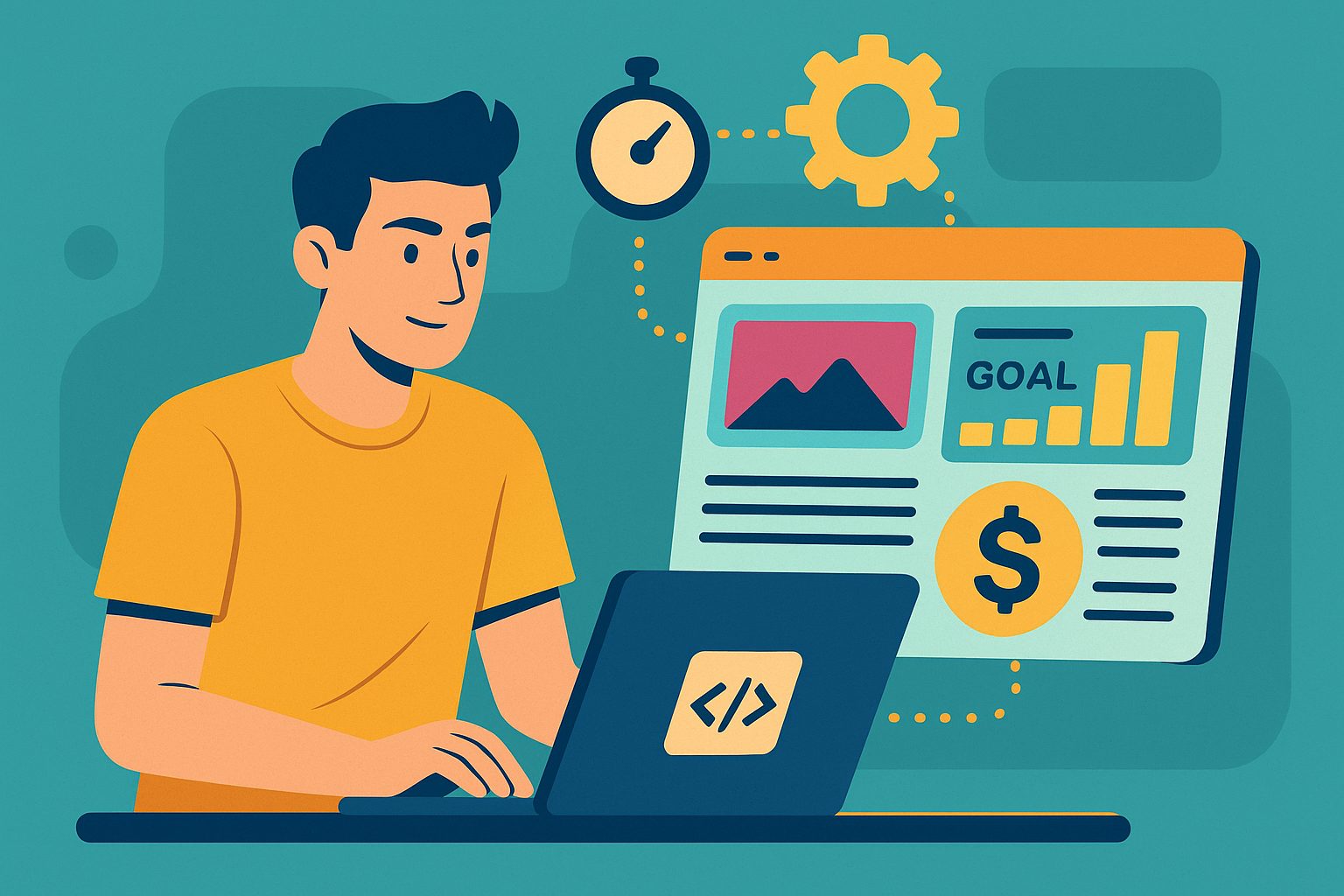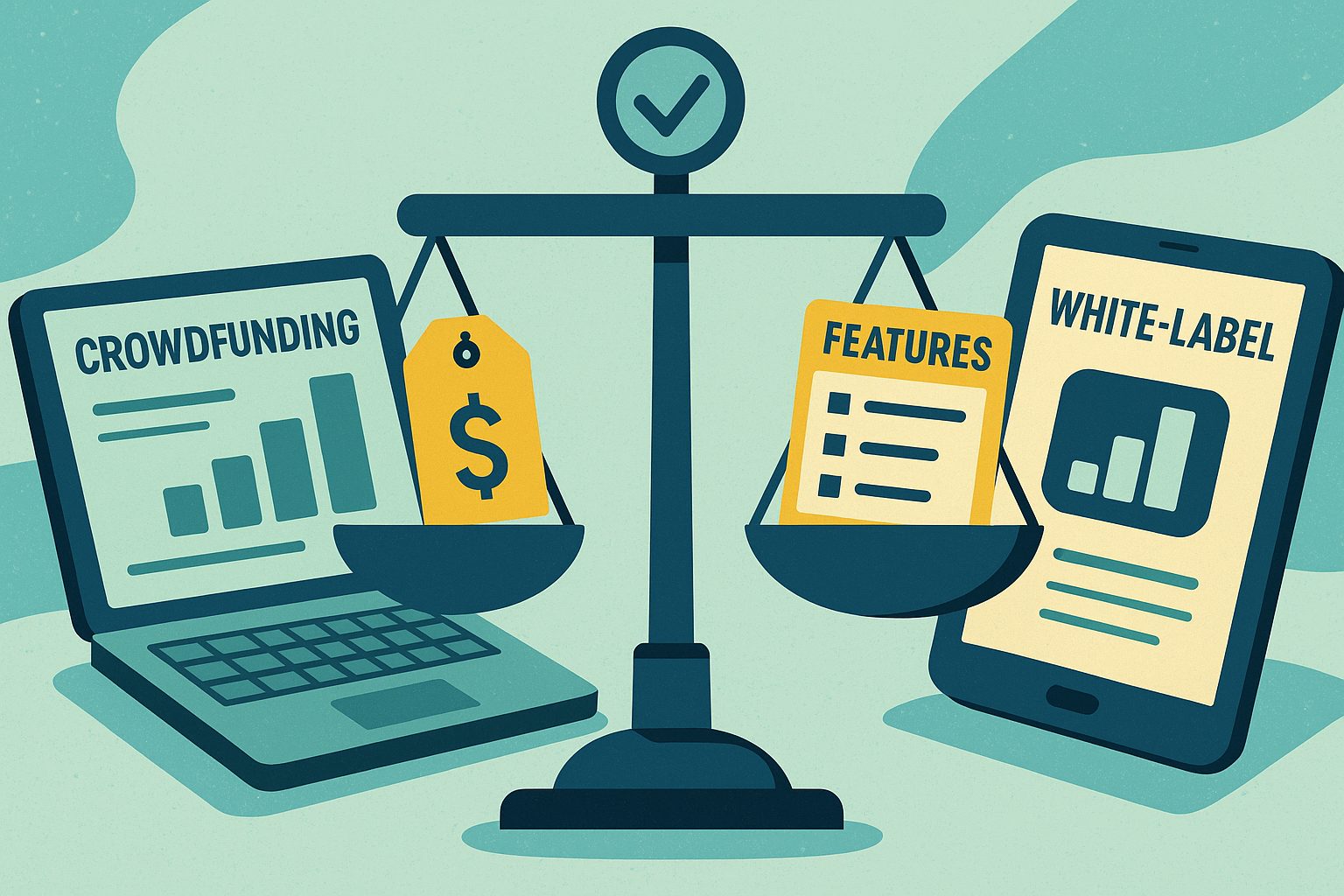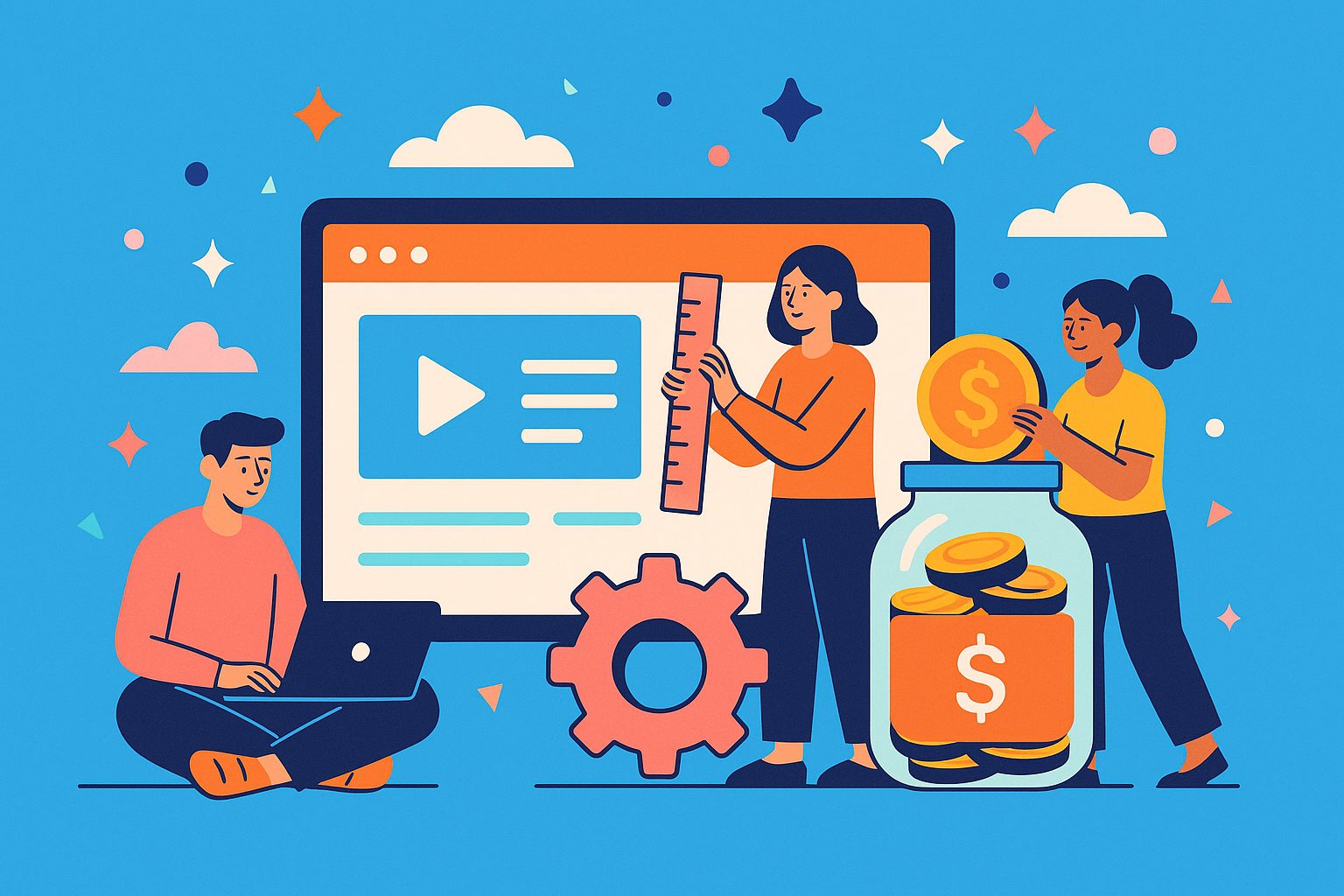Accelerate Your Vision: Why Speed Matters in Crowdfunding
In the fast-paced world of crowdfunding, timing can be everything. The sooner you get your campaign live, the faster you can capture momentum, secure early backers, and leverage social proof. But traditional development cycles—complete with design iterations, custom coding, and lengthy QA—can stretch for months, leaving your idea languishing while competitors seize the spotlight. The fastest way to build a custom crowdfunding platform bridges that gap, marrying professional polish with rapid deployment. By embracing proven tools, smart integrations, and streamlined workflows, you can go from concept to launch-ready in a fraction of the time it would take to build from scratch. This approach not only saves valuable weeks (or months) but also positions you to test market demand, iterate quickly, and refine your offering based on real user feedback.
Define Your Essentials: What “Custom” Really Means
Before diving into the fastest execution strategies, it’s essential to clarify what “custom crowdfunding platform” means for your project. At its core, customization involves more than just slapping your logo on a generic template. It means aligning every element—brand visuals, user flows, reward structures, and communication touchpoints—with your unique value proposition. Your platform might require bespoke tiered rewards, exclusive member areas, integrated referral systems, or equity-based funding options. It could mean embedding live video updates, automating thank-you sequences, or offering seamless international payment processing. By outlining these essential features upfront, you can choose the quickest path that accommodates them, whether it’s a white-label solution, a no-code builder, or a combination of prebuilt modules and light custom coding. This clarity ensures you don’t waste time chasing features you don’t need or settling for solutions that fall short.
No-Code Builders: The Speed Champions
In the race to launch fast, no-code builders are the undisputed champions. Platforms like Webflow, Bubble, and Softr allow you to design, configure, and deploy fully functional crowdfunding sites without writing a line of code. With drag-and-drop editors, prebuilt templates, and powerful visual logic tools, you can craft complex pledge flows, build backer dashboards, and integrate payment gateways in record time. Webflow stands out for its design precision and global CDN hosting, ensuring your campaign looks polished and loads quickly. Bubble offers deeper backend logic and database workflows, perfect for user-generated content and interactive features. Softr, combined with Airtable, lets you rapidly spin up campaign pages tied to live data. By leveraging these tools, teams can cut development time by over 70 percent compared to traditional coding, freeing up resources to focus on marketing, community-building, and strategic partnerships.
White-Label Platforms: Plug, Customize, Launch
For those who prefer a middle ground between full custom builds and no-code solutions, white-label crowdfunding platforms offer a compelling option. Providers such as FundRazr Enterprise, Thrinacia, and CrowdfundHQ deliver fully hosted infrastructures that you can brand and configure to your needs. Instead of building every component from the ground up, you pick a platform that already supports the core crowdfunding features—reward tiers, milestone tracking, donor management, and analytics. Then, you apply your branding, customize the user interface, and tweak settings to match your model, whether it’s donation-based, rewards-based, or equity crowdfunding. Many of these platforms allow you to embed widgets on your main site or run campaigns under your own domain, eliminating the need for separate hosting or extensive security setups. With white-label solutions, launch timelines shrink to a matter of days or weeks, while still delivering professional-level functionality.
Plugins and Extensions: Empowering WordPress Sites
If your digital presence already resides on WordPress, you don’t need to abandon it to launch a crowdfunding platform. Plugins like IgnitionDeck and WP Crowdfunding transform your existing site into a full-featured fundraising hub. These extensions add campaign management, pledge processing, and backer dashboards directly within your WordPress admin. IgnitionDeck stands out for its seamless integration with WooCommerce, enabling robust reward fulfillment workflows and flexible payment options. WP Crowdfunding offers built-in email notifications, campaign analytics, and a dedicated referral system. By installing and configuring these plugins, you sidestep the need for custom theme development or separate hosting. Your content’s SEO equity, SSL certificates, and performance optimizations carry over, allowing you to leverage your existing audience and infrastructure. For organizations already invested in WordPress, this approach can deliver a customized crowdfunding experience in less than a week.
Template Kits: Quick-Start Your Design
Designing a user-friendly interface from scratch can be a major time sink. Template kits—available for platforms like Shopify, Webflow, and Bubble—provide prebuilt layouts tailored for crowdfunding campaigns. These kits often include homepages, campaign pages, reward tables, FAQ sections, and contact forms, all designed with conversion optimization in mind. By selecting a kit that matches your brand style, you can rapidly import it into your no-code or white-label builder, replace placeholder content with your own, and tweak colors and typography to achieve a distinct look. Templates eliminate the guesswork around UX best practices, ensuring your navigation is intuitive and your CTAs are front and center. When combined with rapid deployment tools, template kits can bring your custom crowdfunding site to life in as little as a single weekend, allowing you to focus on compelling storytelling and backer outreach rather than design details.
API-First Approaches: Extending Core Platforms
For teams with existing applications or data systems, API-first development offers a high-speed path to a custom crowdfunding platform. Rather than building every feature in your front end, you leverage the APIs of specialized crowdfunding engines—like Thrinacia’s Developer API or IgnitionDeck’s REST endpoints—to handle campaign logic, payment processing, and user management on the back end. You then build a lightweight front end with React, Vue, or a no-code visual builder that consumes these APIs. This modular architecture lets you reuse proven backend services while designing a unique user experience tailored to your audience. It also simplifies scaling and maintenance: when a payment gateway updates or a security patch is needed, you update the API provider rather than your entire codebase. API-first strategies can cut development cycles by 40 percent, harnessing the reliability of established crowdfunding engines while preserving your brand’s distinct voice.
Managed Services and Hands-On Support
Sometimes, “fastest” means tapping into expertise rather than building in-house. Managed services providers—often affiliated with white-label platforms—offer end-to-end campaign setup, branding, and technical support for creators who want a turnkey solution. These services handle everything from initial platform configuration and theme customization to integration with your CRM and analytics tools. They also provide ongoing monitoring, performance tuning, and user support once you go live. While managed services come at a premium, they can compress timelines significantly. Within a week or two, you can have a fully branded, SEO-optimized, and payment-ready crowdfunding platform without lifting a finger. This approach is ideal for high-stakes launches where time to market and professional polish are non-negotiable, such as major product unveilings, large-scale nonprofit initiatives, or investor-backed equity campaigns.
Hosting and Deployment: Speeding Up with Modern Infrastructure
No matter which builder or platform you choose, the underlying hosting environment plays a critical role in launch speed and performance. Modern hosting providers like Netlify, Vercel, and Cloudflare Pages support continuous deployment pipelines that automatically rebuild and publish your site whenever you push updates. This means you can iterate and see changes in production within seconds rather than waiting hours. Additionally, global CDNs ensure your campaign pages load quickly for supporters around the world, reducing bounce rates and improving SEO. Some no-code platforms include hosting as part of their service, while others let you connect custom domains to these high-performance hosts. By optimizing your deployment workflow and leveraging edge computing, you ensure your crowdfunding platform is not only live fast but also reliably available under sudden traffic surges—crucial for the viral moments that define crowdfunding success.
Automations That Save Hours Every Day
Launching fast isn’t just about going live—it’s about running efficiently once you’re live. Automation tools like Zapier, Make, and n8n can connect your crowdfunding platform to email marketing systems, CRMs, project management tools, and social media channels. You can set up workflows that automatically add new backers to your mailing list, tag supporters based on pledge tiers, send personalized thank-you messages, and update internal trackers without manual data entry. These automations eliminate repetitive tasks, reduce the risk of errors, and keep your community engaged with timely communications. For example, a new pledge can trigger a sequence that shares exclusive behind-the-scenes content or invites that supporter to a VIP Discord channel. Automated workflows not only save hours each day but also elevate the supporter experience, helping you build stronger relationships and drive retention throughout your campaign and beyond.
Planning for Scalability from Day One
Speed and customization are critical, but they shouldn’t come at the expense of scalability. A platform that launches quickly but buckles under traffic or complexity can derail your entire campaign. When choosing tools and architectures, consider factors like data throughput limits, user concurrency caps, and database performance. Many no-code builders and white-label platforms offer enterprise tiers that scale dynamically or allow you to upgrade to dedicated resources. API-first designs can offload heavy logic to specialized services that handle spikes seamlessly. Using modern hosting solutions with automatic scaling and robust security ensures you can handle viral campaigns without downtime. By planning for growth before you launch, you avoid costly migrations or re-platforming mid-campaign, preserving both momentum and supporter trust.
Real-World Speed Tests: Lessons from Fast-Launch Campaigns
Nothing illustrates the power of rapid deployment like real-world examples. In 2024, an indie game developer used Bubble’s visual logic and Stripe integration to launch a pre-order campaign in just under one week. By leveraging Bubble’s template system and a handful of custom workflows, they reached their funding goal within 72 hours. A nonprofit launching a disaster relief fund in early 2025 turned to a white-label platform with managed services, going from contract signing to live campaign in ten days—complete with multilingual pages, tax-receipt automation, and donor analytics. These success stories highlight the diverse strategies creators are using: no-code DIY builds, white-label fast starts, and hybrid approaches. The common thread is clarity of requirements, smart tool selection, and relentless focus on user experience. When speed is the top priority, these tactics deliver results.
Balancing Speed and Quality: Best Practices
Launching fast doesn’t mean cutting corners. To maintain quality while racing to go live, follow best practices that ensure both speed and reliability. Start with a clear campaign blueprint: define your core user journey, map out reward tiers, and outline content needs before touching any tools. Use wireframes or storyboards to align your team on design and flow. Opt for platforms that offer staging environments, so you can test changes without affecting the live site. Implement basic analytics tracking—like Google Analytics and conversion events—before launch, so you capture every data point from day one. And establish an automated backup process for your site and data, ensuring you can recover quickly from any unexpected issues. By combining these safeguards with rapid deployment techniques, you achieve the best of both worlds: lightning-fast launch and rock-solid performance.
Your Campaign, Your Way, Sooner Than You Think
The fastest way to build a custom crowdfunding platform is not a single technology or silver bullet—it’s a strategic blend of tools, templates, integrations, and expert support that aligns with your unique goals and timeline. Whether you’re a solo creator harnessing the power of no-code builders or a large organization leveraging white-label solutions with full-service setups, the path to launch has never been more accessible. By defining your essentials, choosing the right platform, optimizing deployment infrastructure, and automating daily tasks, you can transform weeks—or months—of development into days of focused execution. The era of coding bottlenecks is over. Today, anyone with vision and determination can launch a high-quality, fully branded crowdfunding platform faster than ever before. Your backers are waiting, and your momentum starts the moment you push “Publish.”




